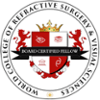Autumn is the Season of Colours: Enjoy Them in All Their Beauty
Colours appear all around us in spectacular abundance at all times of the year, though we don’t often stop for long enough to enjoy or even notice them. But when we do, they can not only help to make our world look more incredible, but they can also provide a boost to our mood. Whether it’s a serene sunset, a rainbow parakeet, or a Monet or Van Gogh, colours can make sights and experiences deeper and richer.
But beyond providing a pleasure for the senses, in nature, colours can represent a whole world of processes that are not obvious at first sight. Whether it’s stunning cherry blossoms in spring or the flaming leaves of autumn, the colours of nature are concurrently reactive to and indicative of the changes of the seasons.
The First Signs of Autumn
The various colours of leaves come from a range of natural pigments. These substances, produced naturally by the tree, help it to obtain food through a process called photosynthesis – a term many of us will still remember from our school days. But while most of us generally consider them to be green, there are three such pigments that contribute to the colour of leaves: chlorophyll (green), carotene (yellow), and anthocyanin (reds and pinks).
While we might think of them as being either green, yellow, orange or red, every leaf is completely unique and can display an endless array of colour combinations. Their appearance can be influenced by a range of factors, including weather conditions, its location on the tree, and which pigments are currently dominant.
Every year, we witness these changes firsthand. But while we might remark on the spectacle of the emblazoned trees around us as they burn from green to yellow, through amber and russet, do we ever stop to wonder why?
Well, as the days get shorter and colder, the chlorophyll that gives leaves their characteristic green-ness begins to break down. As it does so, the other pigments present in the leaves start to come to the forefront. As the tree breaks down chlorophyll, it is able to retrieve nutrients in preparation for the winter.
Many trees will begin to shed their leaves as they turn yellow and orange; however, the leaves of some trees will also begin to turn red and purple. These hues are the result of anthocyanins, which are produced when sugars become trapped in the leaves. Eventually, though, a seal will be formed a the base of all leaves, cutting them off from the tree’s water supply before they inevitably fall to the ground.
A Feast for the Eyes
This simple act of survival, intended to simply see trees through life during the cold winter, can create quite the feast for our eyes. They might not be on display for long throughout the year, but the burst of the intense hues of rust, crimson, and yellow can help to make even the coldest autumn day seem that bit warmer.
There’s no wonder poets and novelists have chosen to document this natural phenomenon throughout history.
Fall, leaves, fall; die, flowers, away; Lengthen night and shorten day; Every leaf speaks bliss to me Fluttering from the autumn tree. I shall smile when wreaths of snow Blossom where the rose should grow; I shall sing when night’s decay Ushers in a drearier day. — Emily Brontë
Enjoy Autumn in All Its Glory
The intense colour changes of foliage in the autumn is almost impossible to miss, even if you have a high prescription for short-sightedness (myopia), long-sightedness (hyperopia), astigmatism, or even presbyopia. But these common refractive errors can make it more difficult to enjoy the small details of this beautiful seasonal display.
While essentially all prescriptions can be corrected with glasses and contact lenses, these external visual aids come with their own drawbacks. Whether it’s the wind and cold weather drying out your eyes and leading to irritation related to your contact lenses, or the rain splatting against your glasses to obstruct your view, many issues can make you consider whether there is a better alternative. And in many cases, there is.
Laser Eye Surgery has come a long way since its introduction in the late 1980s. It can now effectively correct a vast range of errors, including even very high prescriptions. Meanwhile, advancements in Laser Eye Surgery techniques means that it is now an option for many people who might once have been deemed unsuitable for treatment.
So, if your’e tired of watching the seasons go by in a blur, or obstructed by pesky glasses or contact lenses, maybe it’s time to consider the alternative.
If you’d like to learn more about our Laser Eye Surgery treatment options, get in touch with one of our friendly clinic coordinators today, or Book a Consultation to find out if you, too, could be a suitable candidate.


